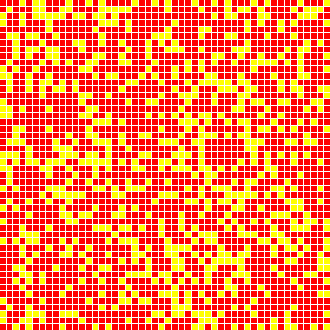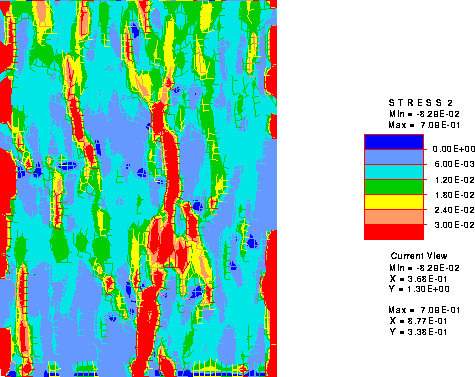
Deformation and Stress of carbon-black filled elastomer:
The local structure of macroscopic materials that appear to be homogeneous is usually highly inhomogeneous. This is particularly true for particulate composites such as carbon-black filled elastomers -- the type of material typically used for such things as automovtive tires and engine mounts. Shown below is an idealized model of a random carbon-black filled Neo-Hookean system. The particles shown in yellow are about 50 Angstrom on a side in size and the speciman is about 2.5 micro-meters on a side. The volume fraction of carbon is 30%.

When the material is extended in the axial direction in a homogeneous manner on the macroscopic scale, the microscale motion of the material will be highly inhomogenous. Shown below is the sample at a macroscopic extension of 30%; i.e. 1/3 increase in overall length. Note the high levels of distorsion in the soft elastomeric matrix (shown in red).

The stresses fields in such materials are also highly inhomogenous even though on the macroscopic level they seem homogenous. Shown below are the contours of the axial (Cauchy-)stress. Note how the load paths are set up by the local distribution of carbon-black.
